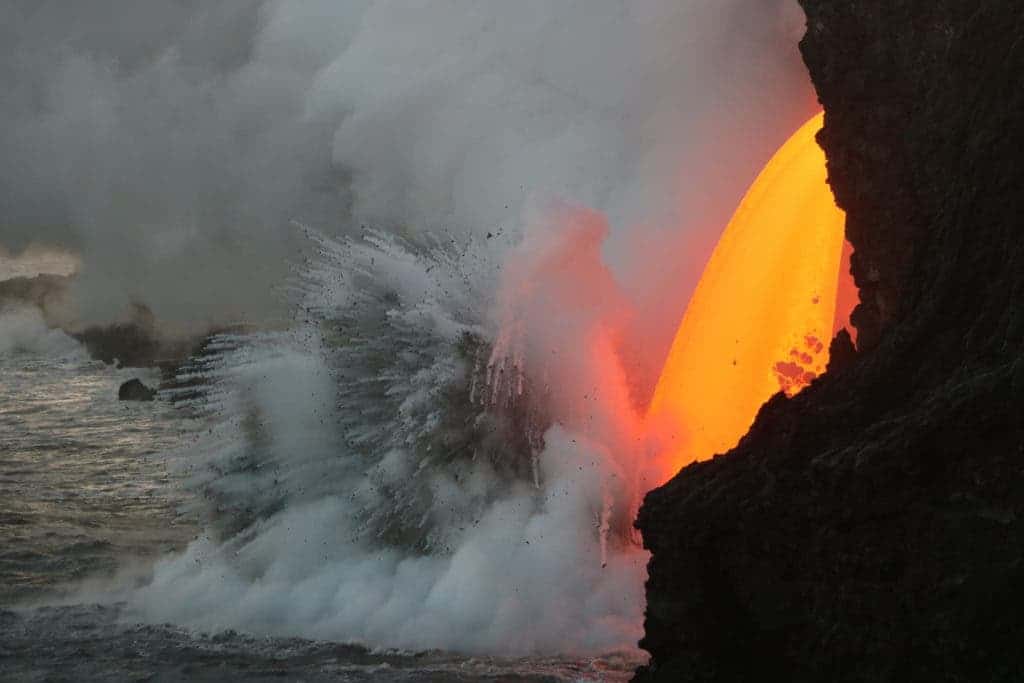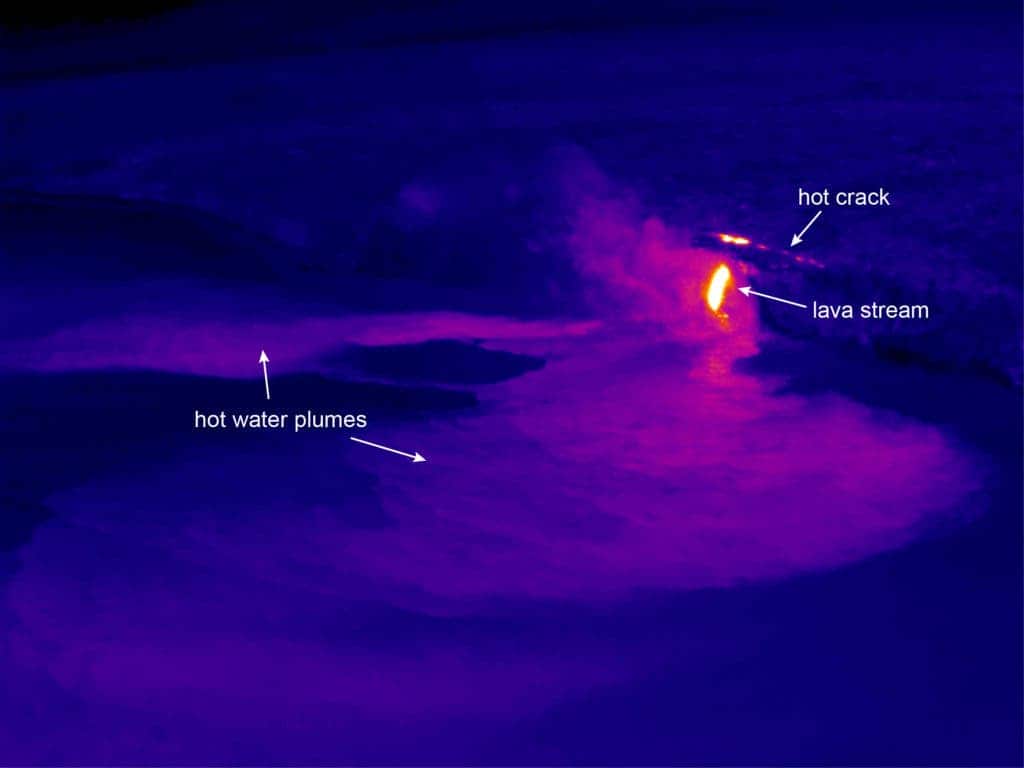The Kilauea volcano has created a dramatic “firehose” as molten lava continues to spew out hot lava and ash.

Kilauea is an active shield volcano in the Hawaiian Islands, and the most active of the five volcanoes that together form the island of Hawaiʻi. The volcano is constantly erupting (more or less), but sometimes it really goes overboard. When the lava reaches the water, it reacts and causes violent explosions as the one seen above. Locals, tourists, and sea captains are constantly watching the beautiful (but extremely violent phenomenon). The USGS writes:
“From the lava viewing area established by Hawaiʻi Volcanoes National Park, you can witness Kīlauea Volcano’s ocean entry from a safe distance. With binoculars or a telephoto camera lens, spectacular views and photos are possible (as seen here)—without risking your life by entering the closed area. As lava streams into the ocean, explosive interactions between the molten lava and cool seawater hurl spatter and rock fragments skyward, often as high as the sea cliff, which is about 28 m (92 ft) high.”

Although this isn’t generally dangerous, people are warned not to get too close to the phenomenon. However, despite signs and roped-off areas, people still cross the boundaries and go to the cliff edge. Geologists are also worried about the cracks around the cliff, which may lead to a collapse. USGS geologist Janet Babb explains:
“The seaward side of that crack could fall away,” Babb, who works at the Hawaii Volcano Observatory, said. “That is of great concern because if it does, it’s going to drop a lot of hot rock into the water and hot rock mixing with cool seawater makes for explosive interactions.”

She also warned about the dangers of lava reaching the water. This should especially be avoided.
“It’s super-heated steam laced with hydrochloric acid from the interaction with the seawater and has shards of volcanic glass,” she said. “It’s something to be avoided.”
Kīlauea’s eruptive history has been a long and active one. The oldest exposed lavas date back 2,800 years and the volcano has been erupting constantly since 1823.


